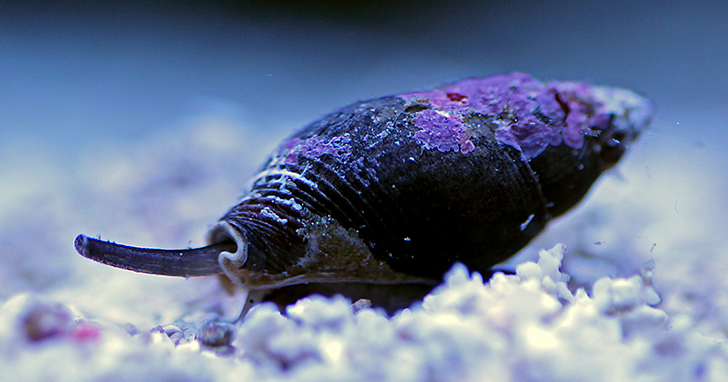Great Scavengers and Sand Bed Aerators
Members of the genus Nassarius are some of the most interesting and effective scavengers of all marine snails. They spend most of their time buried in the sand, with only their siphon extending above the substrate. Because these snails have an incredible sense of smell, they quickly detect any food introduced into the aquarium, and cause the substrate to "boil" as they emerge in search of food.
In addition to playing an important role in sand bed/substrate aeration, Nassarius sp. snails help ensure good water quality. They actively devour leftover food, detritus, and decaying matter within the aquarium before they can be broken down by bacteria and release excess nutrients in the system.
Nassarius sp. snails vary in size and are commonly found in the coastal zones of most oceans. The
Super Tongan Nassarius Snail, (Nassarius distortus), for example, is larger, easier to see, and very helpful in larger aquariums. Smaller
Nassarius Snails are great in smaller aquariums, refugiums, and aquariums with less sand surface area.
If your aquarium contains a sand bed and is invertebrate friendly, these interesting little workers make a great addition to your cleanup crew.
| Interesting Facts: |
| Origin: |
Coastal Zones. |
| Size: |
From 1/2 to 1 inch |
| Diet: |
Omnivorous. |
| Tank Setup: |
Marine. An established aquarium with Reef Rock and a deep sand bed. |
| Tank Conditions: |
sg 1.023-1.025; 72-78°F; pH 8.1-8.4; dKH 8-12 |
| Temperament: |
Peaceful. |
| Care Level: |
Easy. |
|
|

